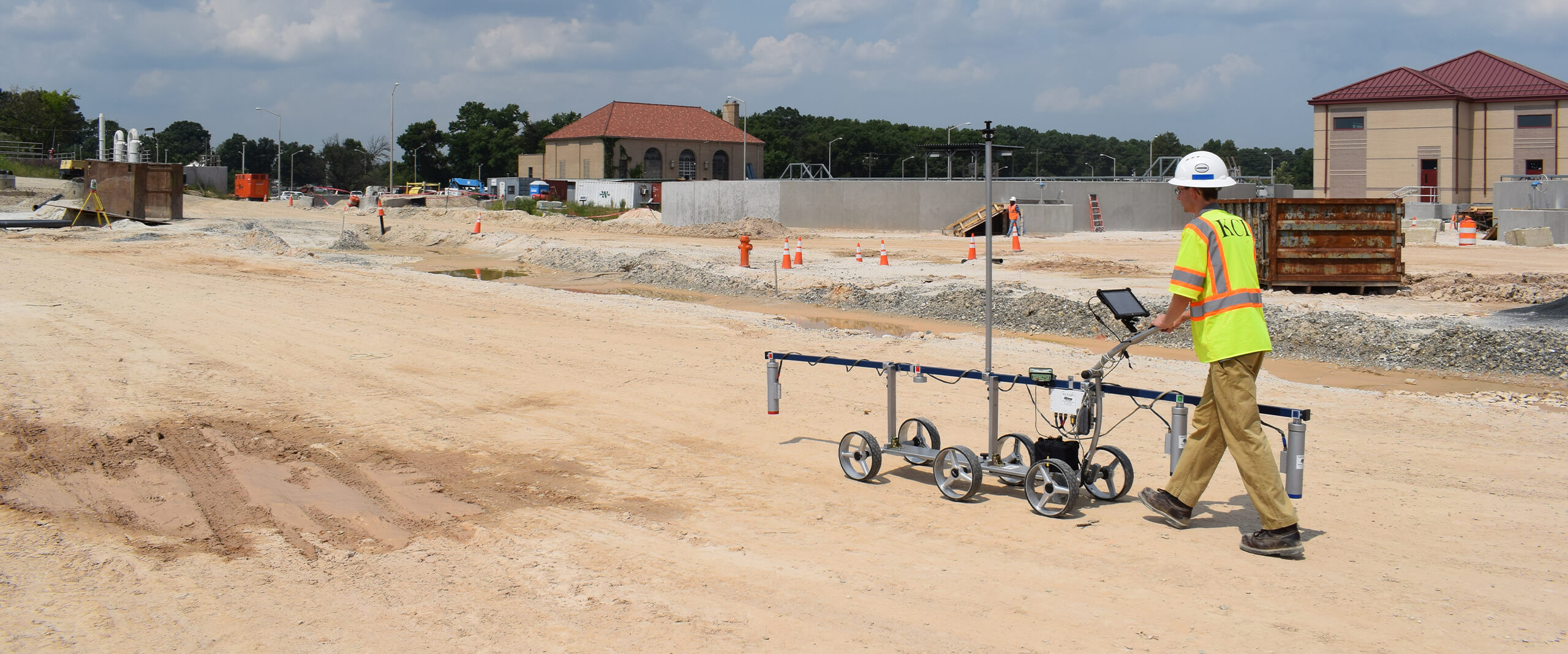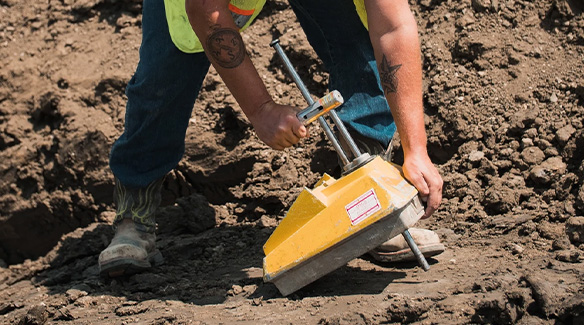Choosing the Right Geotechnical Engineers for Your Next Large-Scale Project
Choosing the Right Geotechnical Engineers for Your Next Large-Scale Project
Blog Article
Checking Out the Ingenious Strategies and Technologies Forming the Future of the Geotechnical Market for Sustainable Engineering Solutions
The geotechnical market is going through a transformative shift, driven by innovative methods and innovations that highlight lasting engineering services. Advanced soil stablizing techniques, using smart materials, and the application of data analytics are redefining just how we come close to infrastructure challenges. As these innovations advertise environmental stewardship, they additionally elevate essential concerns concerning their practical execution and lasting effectiveness. Understanding the interaction in between these innovations and their possible to transform the area welcomes further expedition right into the future of lasting engineering techniques.
Advanced Dirt Stabilization Techniques
Soil stabilization is an essential process in geotechnical engineering, aimed at improving the physical homes of dirt to enhance its load-bearing capability and durability. Advanced dirt stablizing techniques play an essential duty in resolving challenges related to weak or unsteady soils, therefore making it possible for safe and efficient building and construction techniques.
Among the popular methods, chemical stablizing involves the use of ingredients such as lime, cement, or fly ash, which respond with dirt fragments to form a much more natural mass. This strategy is specifically effective in enhancing the strength and moisture resistance of extensive clay soils. Mechanical stabilization, on the other hand, includes the physical alteration of soil properties through compaction or the unification of granular products, causing enhanced thickness and security.
An additional ingenious method is using geosynthetics, which provide reinforcement and minimize dirt erosion while enhancing water drainage. Strategies like dirt mixing and deep dirt stablizing are also getting traction, enabling for in-situ treatment of bothersome dirts. Jointly, these advanced methods not just boost the efficiency of soil frameworks but also add to lasting engineering practices by reducing the demand for considerable excavation and product transportation.
Smart Materials in Geotechnics
Technology goes to the leading edge of geotechnical design, specifically with the incorporation of smart products that boost the performance and performance of dirt structures. Smart materials, such as shape memory alloys, piezoelectric products, and self-healing polymers, are reinventing the means designers approach soil stablizing and framework long life (tailings engineer). These materials can adjust to altering ecological conditions, reply to anxiety, and also repair themselves, dramatically boosting the resilience of geotechnical systems
For instance, piezoelectric materials can generate electrical costs in reaction to mechanical tension, using prospective for real-time surveillance of soil problems and structural stability. Likewise, self-healing products can autonomously repair damages and cracks, minimizing maintenance expenses and prolonging the lifespan of geotechnical possessions. The assimilation of these clever materials not just enhances the mechanical residential properties of dirt however likewise adds to lasting engineering practices by lessening source usage and ecological effect.
As the geotechnical industry proceeds to progress, the adoption of smart materials will play an essential duty in creating ingenious remedies, guaranteeing that infrastructures are not just robust yet additionally versatile to future obstacles. This transformative approach is positioned to redefine the requirements of safety and efficiency in geotechnical design.
Information Analytics for Facilities
The assimilation of smart materials in geotechnical design has actually led the way for sophisticated approaches, particularly in the realm of information analytics for infrastructure. This ingenious strategy leverages extensive data collection and analytical techniques to boost decision-making processes throughout the framework lifecycle. By making use of sensing units embedded in clever products, engineers can continuously keep an eye on crucial criteria such as dirt stability, dampness levels, and structural integrity.
Data analytics enables the improvement of raw information into actionable understandings, permitting anticipating upkeep and enhanced risk administration. Advanced formulas and artificial intelligence techniques facilitate the recognition of patterns and anomalies, which can educate timely interventions and enhance source allowance. Additionally, incorporating geographical details systems (GIS) boosts spatial analysis, additional enriching the decision-making framework.
As infrastructure tasks grow in intricacy, the dependence on data analytics becomes significantly necessary. It fosters a positive strategy, decreasing the likelihood of failures and guaranteeing the longevity and sustainability of structures. By harnessing the power of data analytics, the geotechnical sector is placed to not only enhance present practices but additionally pioneer ingenious services for future facilities difficulties. This harmony of innovation and engineering principles will specify the future of sustainable framework development.

Lasting Ground Renovation Methods
Different sustainable ground renovation methods are arising as vital services to address the challenges of geotechnical design while minimizing ecological effect. These techniques not only improve soil efficiency however additionally advertise eco-friendly stewardship by lowering dependence on conventional, much more intrusive methods.

One more innovative method is the application of geosynthetics, that includes naturally degradable products that reinforce dirt while advertising drainage and disintegration control - geotechnical engineers. This minimizes the demand for heavy equipment and lessens site disturbance, therefore preserving regional ecosystems
On top of that, strategies such as dynamic compaction and vibro-replacement have actually evolved to consist of lasting techniques, decreasing and integrating recycled materials carbon impacts. These approaches exhibit the sector's shift towards even more eco responsible services, ensuring that ground enhancement not just satisfies design needs however also adds positively to the surrounding setting.
Advancements in Environmental Monitoring
In current years, innovations in ecological monitoring have actually dramatically boosted the ability to assess and manage geotechnical projects with minimal he said ecological disturbance. Cutting-edge technologies, such as remote noticing, Net of Things (IoT) devices, and real-time information analytics, are changing exactly how ecological effects are determined and mitigated.
Remote sensing modern technologies, including satellite images and air-borne LiDAR, promote the quick assessment of land usage changes and environmental conditions - geo tech engineer. These devices permit continual monitoring of sites, allowing designers to recognize prospective problems prior to they rise. Additionally, IoT gadgets, furnished with sensing units for parameters like dirt moisture, temperature, and gas emissions, give live information streams that improve the understanding of site-specific ecological variables
Real-time data analytics better refine decision-making processes by incorporating information from various resources, permitting aggressive monitoring strategies. This all natural technique not just guarantees compliance with environmental guidelines but likewise advertises sustainable practices within resource the geotechnical industry.
As these advancements continue to progress, they hold the possible to connect the gap in between engineering goals and environmental stewardship, cultivating an extra sustainable future for geotechnical jobs worldwide.
Verdict
Advanced dirt stablizing methods, the integration of clever materials, and the application of data analytics collectively Related Site improve the durability and effectiveness of framework. These improvements not just address modern engineering challenges but also pave the method for a more sustainable future in geotechnical practices.
Methods like dirt blending and deep dirt stablizing are likewise gaining traction, allowing for in-situ therapy of troublesome soils. Collectively, these advanced methods not only improve the efficiency of dirt structures however additionally add to lasting design techniques by lessening the requirement for extensive excavation and product transport.

Report this page